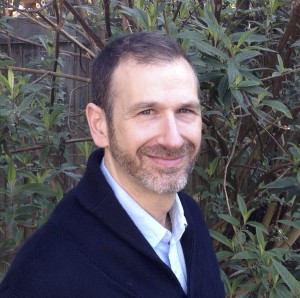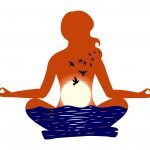Brad S. Lichtenstein, ND, BCB
On Christmas Day, Sally, an energetic 45-year-old mother of 3, all under the age of 10, woke with a headache. After taking what she thought was a benign and common OTC analgesic (containing acetaminophen, aspirin, and caffeine), she began to vomit and retch nonstop for several days, long after her digestive tract was utterly empty. A trip to the emergency room, with an array of lab tests, X-rays and scans, culminated in sitting before an oncologist discussing her results. A large mass was found in her stomach. However, tumors were also discovered on her bones, lung, and brain. More tests ensued and a final diagnosis of stage 4 stomach cancer was given.
“How did this happen? I haven’t been sick in years. I don’t even get a cold. My father just competed in another triathlon at the age of 75. No one in my family had cancer. We’re all healthy.”
These “Why me?” statements are to be expected. They are part of the natural process of grieving and healing.
Sally came from a family of medical practitioners and was the “ideal” patient. She arrived promptly to every appointment, having researched all possible options, ready to engage, and determined to be an active participant in her own care. I met Sally a few weeks before she was about to begin her first round of chemotherapy. Unaccustomed to personal struggles with health, she was lost in the vast wilderness of the unknown. She was overwrought with anxiety, constantly envisioning an outcome of wasting, weakness, collapse, and death.
“Who will care for my children? Who will teach my daughters how to be young women? I want to see my kids grow up, date, go to college, get married. I want to meet my grandchildren.“
Sally was in turmoil. She dreamt of a calm mind. In an attempt to find some semblance of balance, she studied mindfulness-based stress reduction, yet she struggled with her daily mindfulness practice. Peace remained elusive.
Assessing a Patient’s Orientation to Life
What do you say to a woman in Sally’s situation? How do you sit with her suffering? When I reflect on this, the words of Bill Mitchell, ND, echo in my ears, asking me, what needs to be healed? The answer, of course, rests with your worldview about the goals for care.
Growing up in the 80s and cutting my “naturopathic teeth” in HIV care, I questioned the purpose of my work after reading countless obituaries. If I couldn’t save my patients, if I couldn’t stop them from dying, what good was I? Sally was under the care of an excellent medical team of oncologists, naturopathic physicians, acupuncturists, and nutritionists. But what if the cancer continued to progress? What if the treatments further debilitated her to the point of death? While one of my colleagues admitted how she would feel like a failure if Sally died, I was unwilling to entertain that paradigm. No longer interested in the heroic aspects of medicine, I became able to fully embrace the fact that I feel most comfortable living (and practicing) at the bottom of the therapeutic order, with its emphasis on Cultivating the Conditions for Health / Establishing the Basis of Care.
I believe the fundamental goal for all care, regardless of discipline and modality, is the same – to help people identify how they orient to life, and discover novel ways to move through their days. Rather than the emphasis being on the elimination of disease, what would happen in the clinical encounter if we spent an equivalent amount of time asking patients to identify how they are orienting to life? This is more than intentions, attitudes, and mindsets; it is a whole bodymindspirit engagement that has several components.
Sally’s orientation vacillated between panic and despair. She criticized herself for her inability to consistently meditate. She chastised herself for eating the occasional “proinflammatory foods.” The way she engaged with her medications and supplements was rigid and unyielding. As she reported all these, I watched her body tighten as she held her breath, as if terrified it might be her last. While some might argue she was participating in her healthcare and being proactive by trying to eat right and meditate, I would disagree. In panic mode, her nervous system was on high alert. Her amygdala was on guard, firing at full speed, increasing cortisol levels, which, in the long run, fail to contribute to the healing process.
How could Sally engage in and orient to her life in a way that promoted healing rather than perpetuating anxiety? In order to begin this pursuit, a sense of safety between all parties must be created. If the patient fails to feel safe, she orients to our care, the visit, or the setting in a defensive, anxious manner, further activating the sympathetic system. From such a stance, all attempts to move in a new direction will be thwarted. Building rapport is not some pleasant happenstance, but a requisite for all future care, and this became my first goal.
Cultivating Mindfulness
The next step in the orienting process is learning to cultivate mindfulness. This can be defined as sustained attention to the present moment without judgment. Mindfulness allows us to stay present to our experience, whether physical sensations, emotions, or cognitive processes, without needing to dissociate, avoid, or deny. How many health problems originate from our inability to stay present? Would we over-exert and over-extend if we were able to stay present to what was occurring in the moment? Would we push ourselves past our limits if we practiced deep listening to the wisdom of our body? Would we overeat? Would we be sleep-deprived? Would we spend all day stationary and sedentary? I do not believe so.
Sally studied mindfulness and hoped it would create some peace of mind. The practice of mindfulness trains our capacity for self-referential processing. Mindfulness allows us to become more perceptive and introspective as we learn to take an observer’s stance and witness all that is arising without the need to immediately and unconsciously respond and react. Some mistake mindfulness with passivity, yet as anyone who sat down for a mere 5 minutes to focus on the breath can attest, this is far from easy. In the initial stages of mindfulness training, most people use an anchor, such as the breath, to focus the attention. The anchor can be anything, from bodily sensations (breath, or even discomfort and pain), to emotions, and even thoughts. With the breath, for instance, the instructions are simply to notice the breath without changing or altering it in any way. Focus the attention on the sensations of the air moving in and out of the body and the subsequent somatic feelings linked to this process. Whenever distractions, such as thoughts or physical irritation arise, acknowledge these and bring your attention back once more to the anchor (breath). But here’s the challenge – many novice practitioners judge themselves in some way. They think of themselves as a failure if their mind is full of distractions. They call themselves inept if they lose focus and ruminate. Or they fret and think about all the time wasted sitting and doing nothing. Such appraisals do not orient us to health, but move us towards stress.
Mindfulness trains us to observe the present moment, and this traditionally begins with observing our internal physical world – the world of exteroception and interoception. These systems are involved in helping us create a sense of our physical self through not only the 5 senses, but also somatic sensations like temperature, pain, pressure, vibration, proprioception, and those that arise from the viscera and organs. Research shows that when mindful and attentive to these experiences without judgment, areas of the prefrontal cortex (medial and dorsolateral) and insula are activated, which may deactivate the amygdala and the flight or fight response.1
In order to re-orient to the world, we must first cultivate this self-regulatory capacity for reflection. This can only be done when we can accept the present moment, ourselves, and our surroundings in a non-reactive manner. Mindfulness then becomes a healing way of orienting to the world since it reduces intrusive ideation and rumination, which in turn reduces autonomic arousal and fosters a sense of self-efficacy.
Tolerance and Impermanence
Two other important concepts are addressed in mindfulness training: Tolerance and Impermanence. Through mindful observation we begin to recognize that is safe to have feelings and bodily sensations. We learn to tolerate distressing and uncomfortable feelings and sensations without needing to avoid. Often, when we feel physical or emotional pain, we tighten and constrict around it in an attempt to make it go away; the orienting approach being a defensive one. How many patients (and loved ones) have you known who have apologized for tears? They disengage from their feelings, usually due to a culturally-held notion that crying is either a weakness or an imposition. They may feel unsafe to express their deeply felt emotions, lest someone use it against them. Whenever we hand a patient a tissue at the first sign of a tear, remember that they may perceive this as a sign to “keep it in check” and hold back their emotions.
On the purely physical level, how do we orient to our bodies? If we have an ache or pain, do we reach for our tincture bottle, homeopathic remedy, essential oil, cup of caffeine, or simply ignore it? I am not suggesting that we abandon our medicines. I am asking us to reflect on the deeper orientation we have to our bodies. Is the body a mere instrument for the mind, so that any sign of trouble becomes ingratiating? And what of the times, which are bound to come, when all our medicines are unable to reduce the pain? What then? How do we tolerate our experience? Mindfulness provides us a new direction, a new orientation. The more we practice this way of acceptance, the greater the likelihood we can utilize it in times of distress.
Like everything in life, our bodily and cognitive processes are constantly changing. However, most of us orient from a stance of Permanence. We expect everything to stay the same, like our hair and waistlines, our age, and identities. However, in this battle with reality, we are all the losers. With a mindful, healing orientation to life, we can continue to wish for change, but not fight or flee from our experience.
Once we cultivate mindfulness in a safe environment, we are ready to mobilize and move, as we unfreeze from habitual patterns that no longer serve us, and discover new, healing-orienting responses and impulses.
Sally’s Process
I felt Sally’s wilderness. But how did she orient to the world? Since Sally already knew mindfulness meditation, I thought a change might be in order. I decided to guide her through a heart-centered meditation and see what happened. To allow her to settle into the moment and set the stage, I began with a brief mindfulness body scan. Next, I invited her to narrow the field a bit, and bring her attention and focus to the area around her heart. After several minutes here, I invited her to imagine breathing in and out through her heart. I usually remain at this step for some time before moving on. Finally, I asked Sally to call to mind someone or something she loves and appreciates without question. This can be a relative, a friend, or even a pet, living or dead, for whom she feels love and appreciation. Or it can be a place in nature where she feels a sense of peace and calm. It could even be a quality that she admires in herself. While the final steps in this meditation may include asking the heart for guidance, I ended the meditation with this step.
This entire process lasted about 20 minutes. I had the fortune of attaching Sally to a biofeedback monitor that recorded her heart rate variability, and the results, coupled with her responses, informed me about how she oriented to life. During the meditation, when she began to imagine breathing in and out through the heart, her heart rate variability (HRV) increased and the heart rate wave became coherent – both indications of cardiovascular health, vagal tone, and autonomic balance.
Asking about her experience, Sally began to cry. She truly appreciated this meditation. Every time she would practice mindfulness meditation, her anchor was her breath. Unfortunately, with every breath in and out, she envisioned the tumor in her lung growing and expanding. She would acknowledge this thought, and desperately try to return to sensation of the breath, but the image always returned. Her meditation practice, which she hoped would lead to peace, resulted in her practicing and orienting on rumination. With the heart-centered meditation, she was able to keep her focus on the heart, and for the first time in awhile, Sally felt relief.
Sally practiced breathing in and out through the heart for the week between our visits, and she found this extremely calming. It allowed her to orient to her breath and the present moment in a way she was unable to do before. During our second visit, I repeated the meditation sequence once more. This time, when she focused on love and appreciation, her coherent HRV lasted for no more than a minute before it became erratic. I immediately asked her about her orientation, what was she thinking. With eyes remaining closed and still attached to sensors, she looked perplexed. She said she was thinking of her sister who was arriving soon to care for her during her treatments.
“What else?” I persisted. “Nothing, I love my sister. I am excited to see her. She is dear to me.” Then Sally drew in her breath and added, “Oh my! My sister isn’t even here yet, and I am already imagining her leaving.”
Like many of us, Sally was orienting to loss, unable to abide in love and appreciation.
I only saw Sally for a few more visits until she became too weak to come to the clinic. However, she did share some lessons she gained from our session. It was not her actions that mattered most; it was the attitude behind them. At any given moment, it takes too much effort to fight with reality. If you orient from a healing stance, you may still reach for an analgesic (although she never looked at those pills the same way); however, your body and mind can rest in the process. Through our work, Sally increased her awareness of how her body reveals her orientating response. She began to identify when she held her breath, raised her shoulders or braced her torso, and these happened with a surprising frequency, she realized. Once identified, she had choice and freedom. She could adopt a new stance, move in a new way, and begin again. In the end, Sally may have lost the fight with cancer, but I would like to believe she found some healing along the way.
 Brad S. Lichtenstein, ND, BCB is a graduate of Bastyr University, where he is currently Chair of Homeopathy, and is BCIA board-certified in biofeedback. His work emphasizes the creation of psycho-emotional-spiritual wellness in the midst of living with chronic, life-challenging illnesses and trauma. For several years, he worked at the Bastyr Integrative Oncology Research Center (BIORC), providing counseling, biofeedback, meditation, breathwork and other bodymind therapies. Additionally, he was involved in a joint research study between Bastyr University and University of Washington examining end-of-life care and quality of death, during which time he led over 500 guided meditation sessions to hospice patients. At Bastyr Center for Natural Health in Wallingford (Seattle), he supervises Integrative BodyMind/Biofeedback shifts, teaching body-mind techniques to patients to help reduce stress, minimize pain, and create a balanced life. He provides bodymind medicine, somatic therapy, and biofeedback mentoring and training to licensed practitioners of all disciplines, in person and via the Internet. In addition to his work at Bastyr, Dr Lichtenstein maintains a private practice, as well as teaches group workshops and writes (see www.thebreathspace.com). If you have any questions or comments, he would love to hear from you at [email protected].
Brad S. Lichtenstein, ND, BCB is a graduate of Bastyr University, where he is currently Chair of Homeopathy, and is BCIA board-certified in biofeedback. His work emphasizes the creation of psycho-emotional-spiritual wellness in the midst of living with chronic, life-challenging illnesses and trauma. For several years, he worked at the Bastyr Integrative Oncology Research Center (BIORC), providing counseling, biofeedback, meditation, breathwork and other bodymind therapies. Additionally, he was involved in a joint research study between Bastyr University and University of Washington examining end-of-life care and quality of death, during which time he led over 500 guided meditation sessions to hospice patients. At Bastyr Center for Natural Health in Wallingford (Seattle), he supervises Integrative BodyMind/Biofeedback shifts, teaching body-mind techniques to patients to help reduce stress, minimize pain, and create a balanced life. He provides bodymind medicine, somatic therapy, and biofeedback mentoring and training to licensed practitioners of all disciplines, in person and via the Internet. In addition to his work at Bastyr, Dr Lichtenstein maintains a private practice, as well as teaches group workshops and writes (see www.thebreathspace.com). If you have any questions or comments, he would love to hear from you at [email protected].
Reference
- Farb NA, Segal ZV, Mayberg H, et al. Attending to the present: mindfulness meditation reveals distinct neural modes of self-reference. Soc Cogn Affect Neurosci. 2007;2(4):313-322.





